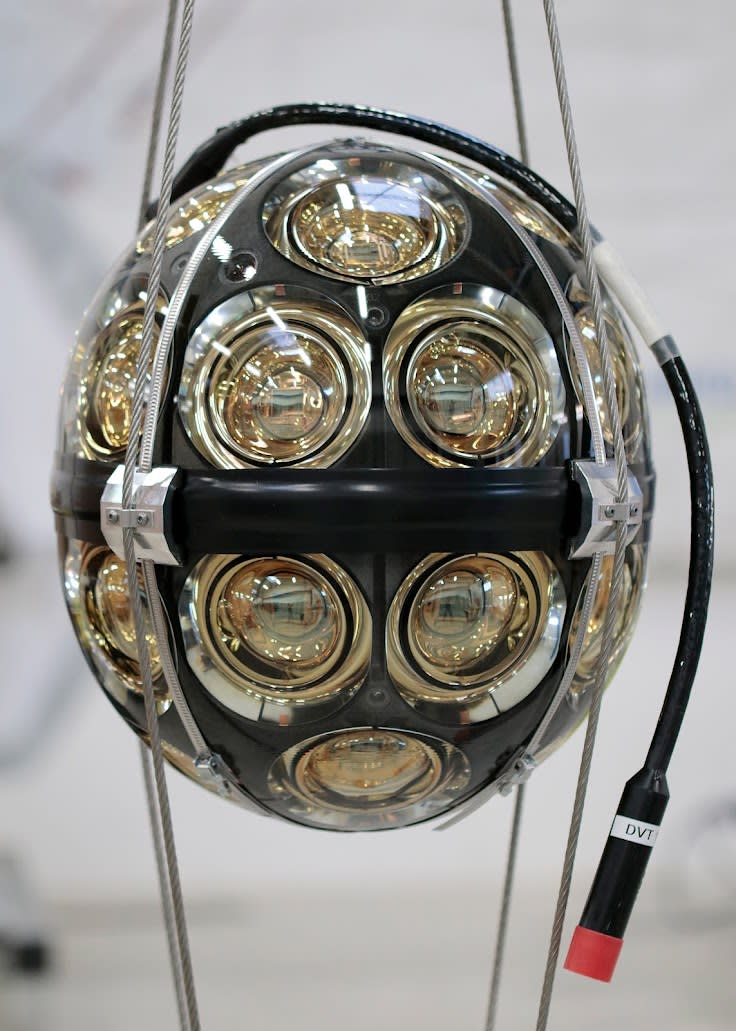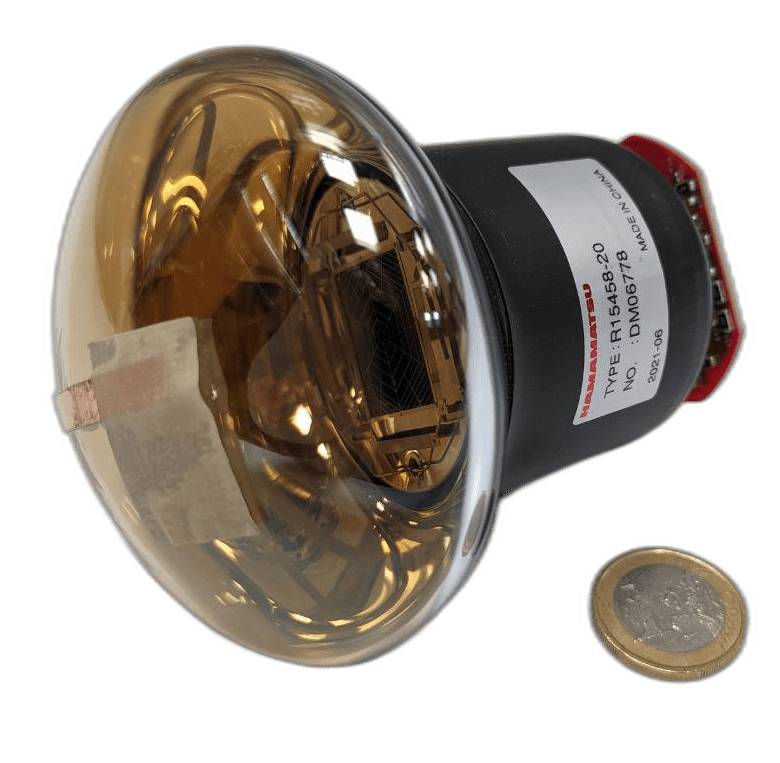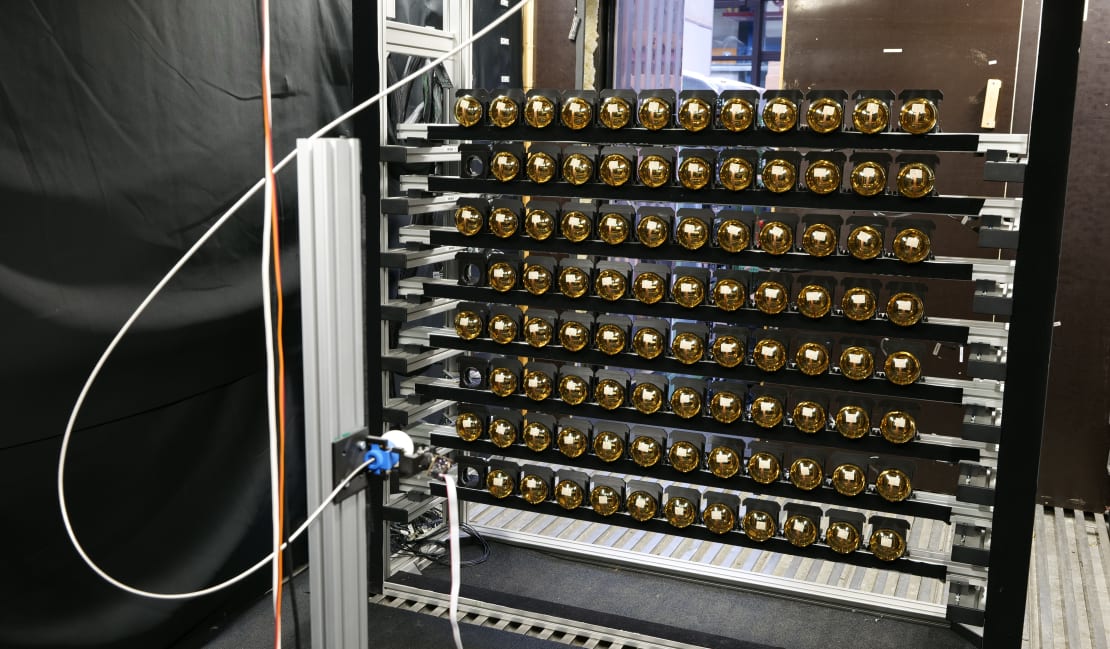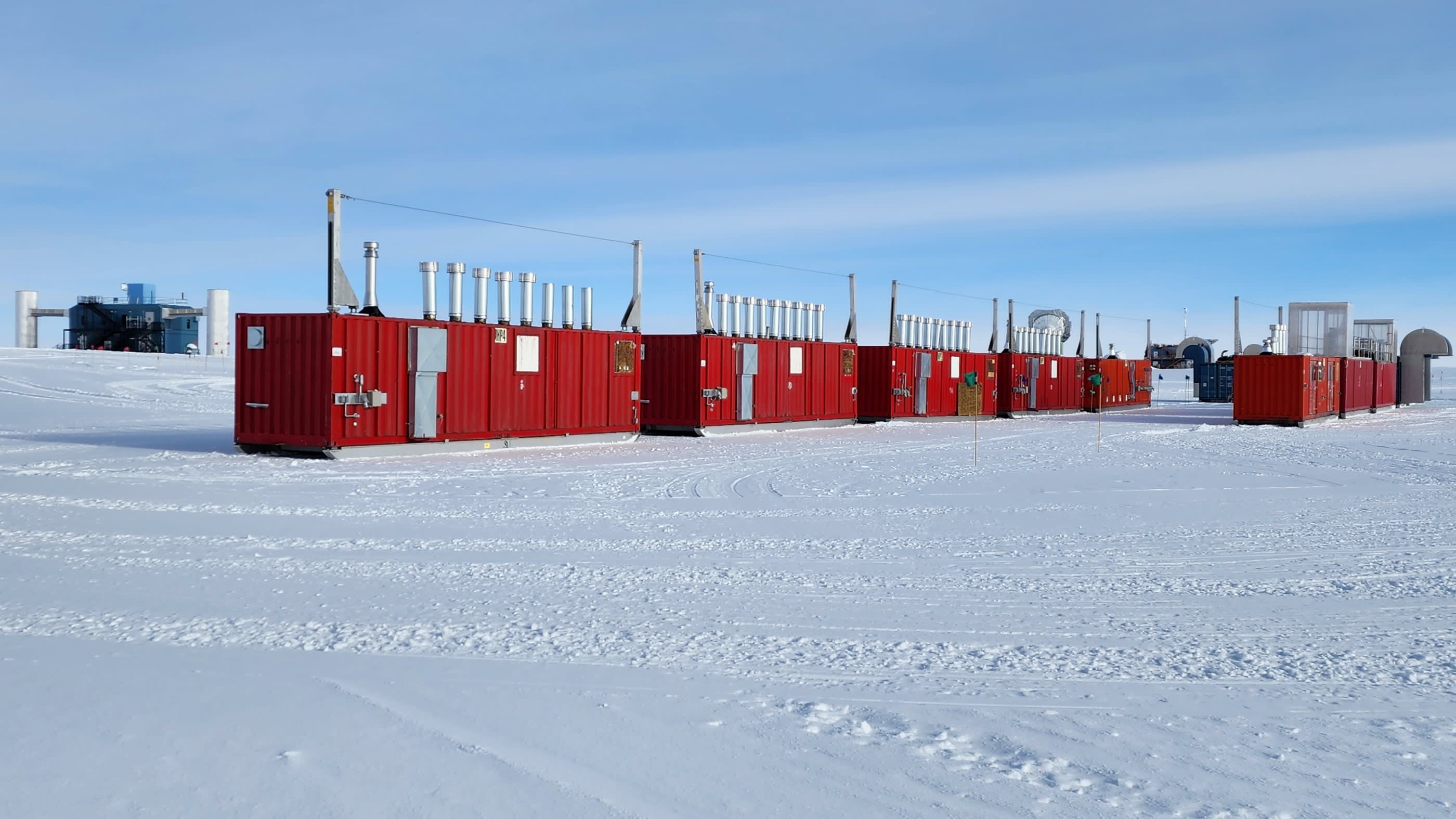At the South Pole, the cubic-kilometer-sized IceCube Neutrino Observatory searches for high-energy neutrinos of astrophysical origin. When a neutrino crashes into the ice, blue light is emitted and detected by some of IceCube’s 5,160 digital optical modules (DOMs) across 86 vertical cables (strings) embedded deep within the Antarctic ice.
The IceCube Upgrade, an enhancement to IceCube currently in progress, will deploy seven new strings of optical modules in the center of the existing detector array, dramatically increasing IceCube’s sensitivity at low energies. The deployment is set to finish during the 2025–26 Antarctic field season, with the first field season for the Upgrade successfully completed.


As a stepping stone to the planned IceCube extension, IceCube-Gen2, the Upgrade will act as a testbed for the next generation of optical modules. The multi-PMT digital optical module (mDOM) will be one of two main optical sensor types deployed in the Upgrade, with the other being the “Dual optical sensors in an Ellipsoid Glass for Gen2,” or (D-Egg). Production of mDOMs is currently underway, with deployment scheduled for the 2025–26 field season. The deployment will include over 400 mDOMs, each equipped with 24 photomultiplier tubes (PMTs) that will register small amounts of light. But before integration into the mDOMs, the PMTs have to be tested for functionality and quality.
In a paper submitted to JINST, the IceCube Collaboration presents the results from testing over 10,000 PMTs, which was achieved through an impressive 1,000 PMTs tested per week.
In order to test an enormous amount of PMTs on a short timescale, collaborators had to build two separate testing facilities, one at RWTH Aachen University and another at TU Dortmund University, both in Germany. The facilities were fully automated with custom software and designed for simultaneous testing of more than 90 PMTs.

To mimic conditions at the South Pole, the PMTs were mounted on a custom-built rack housed in a light-tight, temperature-controlled dark room with illumination by a multiwavelength light-source system.


“All PMTs were cooled down to -20°C and tested for many quality requirements; each testing cycle took just under 24 hours,” says Lasse Halve, PhD student at RWTH Aachen University who conducted the tests alongside PhD student Johannes Werthebach of TU Dortmund University. “We were able to test all 10,427 PMTs within three months.”
Halve and Werthebach found that while the vast majority of PMTs were compliant with the quality criteria set, most PMTs had increased dark rates—the average rate of registered counts that are measured in the absence of light. However, a low dark rate is preferred, since researchers can get a clearer view of a neutrino event inside IceCube, especially at lower energies.
The high dark rates were traced back to increased concentrations of radioactive materials in the PMT glass, which prompted the IceCube Collaboration to adjust their strategies for data compression and transmission for the mDOMs. Ultimately, the PMTs were accepted and deemed usable.
“We ensured that the essential parts of the mDOMs work as expected,” says Halve. “The high throughput of the testing facilities is critical for testing the PMTs for IceCube-Gen2, where the numbers will be even larger.”
In addition to testing mDOM PMTs, they successfully tested two prototype PMTs for IceCube-Gen2 and over 300 PMTs for the first instrumentation string of the Pacific Ocean Neutrino Experiment.
+ info “Acceptance Tests of more than 10 000 Photomultiplier Tubes for the multi-PMT Digital Optical Modules of the IceCube Upgrade,” IceCube Collaboration: R. Abbasi et al. Submitted to JINST. arxiv.org/abs/2404.19589



